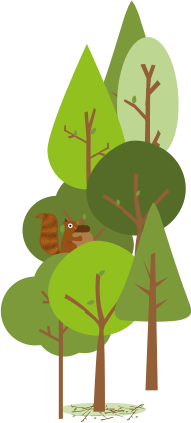

The Lost Words February: Kingfisher etc
26th February 2020


I continue into Robert’s Park where I see another of the ‘lost words’. The huge grey heron regularly stands as still as a statue fishing on the weir. Sometimes he moves to a grassy island further downstream, but as the winter storms arrive, he’s absent from his usual position as the river swells and is too fast flowing.
I cross over the river and turn onto the canal-side path, following signs for the Sustrans National Cycle Network Route 696. Occasionally, I’ve spotted my favourite bird here; the kingfisher. A flash of electric blue as it flies so incredibly fast just above the water and lifts my spirits for the rest of the day. In the blink of an eye it’s gone!

Approaching Dowley Gap lock is another haunt of the kingfisher, but you have to look closely as it’s orange throat camouflages it against the trees, as it sits completely still on a branch.
I travel towards Bingley and the canal passes alongside the busy dual carriageway, hidden by a high wall. It’s as if the urban landscape doesn’t exist except for the hum of traffic passing fast the other side and the tall chimney of an old mill high above me reflected in the canal. My favourite section of the journey is approaching: the 3 and 5 rise lock staircases taking the canal steeply upwards.
As I reach the top of the 3 rise locks, the kingfisher is always on my mind. Will I see it today? Where will it be? Flying, sitting or out of sight? On one memorable morning, as I slowed to catch my breath at the top of the hill, I was rewarded with the sight of a kingfisher waiting for me, sitting still, but very close. I stopped and watched, fascinated, taking in its every move, until suddenly he was off. I tried to follow the speeding blue bullet, but he was far too quick for me!

Robert Macfarlane expresses this perfectly:
‘Neat and still it sits on the snag of a stick until with…
Gold-flare, wing fan, whipcrack the kingfisher- zingfisher, singfisher!
Flashes down too fast to follow, quick and quicker carves its hollow’
I put in another effort to climb the steep hill of the 5 rise locks; the steepest flight of locks in the UK! I marvel at the feat of engineering that was involved in building these locks back in 1774 and challenge myself to see if I can get to the top in under a minute…. just made it in 58 seconds this morning!
(Photograph by Shantanu Kuveskar)
Onwards I push, often cycling into a headwind so I savour the times when it’s still and there is a perfect reflection of sky, trees and canal boats.
In spring-time, I love seeing the mallard ducks with their ducklings and the greylag geese with their goslings. They seem so small and dart around in zig zags, swirling and twirling around whilst trying to keep up with mother duck. Although, along the path, there’s the hazard of angry geese loudly hissing and running at me to protect their young. Giving them a wide a berth I pass by hoping my legs are far enough away from their open beaks!
At other times, 
It’s nearly the end of my canal side journey, but there’s one last chance to see a kingfisher or in Robert Macfarlane’s words: ‘rainbow bird – that sets the stream alight with burn and glitter!’
I love commuting by bike along the Leeds Liverpool Canal. It’s such an energising way to start the day, immersed in nature, sometimes bathed in sunshine, although more recently battling stinging hail and headwinds. It’s always worth the effort for the glimpse of a kingfisher, the reflections of the trees and sky, a solitary heron fishing or just being outdoors cycling with the wind on my face.
By Julia Babbitt
Robert Macfarlane Twitter: @RobGMacfarlane

